The bards, those “popstars” of the middle ages famous for their sonorous voices and for their poetic talents, are still widely known today. Walther von der Vogelweide and Oswald von Wolkenstein – names we all recognize (at least here in Europe).
The Vermona ’14 Analogsynthesizer is a bard of modern times. A true individualist on the electronic music scene. This bard doesn’t just sound, it sings! Mind you, synthesizers in the singing category are rare. Oberheim OB-1 (“exact VCO tuning”) and the Moog Prodigy (“sync sounds”) are among the few vintage synths in this field. Vermona Mono Lancet (and Mono Lancet ’15) do sing a little. And that’s about it. The rest of the synths just – sound.
Which isn’t to say that the rest are mediocre instruments. But only rarely – very rarely – does a synth appear with lyrical and poetic qualities as well. The Vermona ’14, for instance. (This is also a perfect arpeggio-synth, by the way.)
A few quick words about design: The instrument’s blue is very noble (not always apparent in the photos) – shimmering silver, appealing. Switches, sockets, knobs: Everything harmoniously solid. The panel topped with white and black knobs. White for tone generation (VCO-MIXER-VCF-VCA), black for modulation (ENV-VCF MOD-LFO-VIBRATO) and performance (BENDER-VEL-ARP-EDIT). A logical and user-friendly layout.
Paradoxically, the ’14 isn’t a synth you can just pick up at your local dealer. Of course, you can ask, but you’re bound to hear “sorry, sold out!” … A mere 222 units of this very refined synth are scheduled to be built. So be quick, should you want to call one of these modern bards your own.
Superiority in acousto-electrical manufacturing
Vermona’s ’14 Analogsynthesizer stands in a tradition going back 350 years to the days when Vogtland (at the border to the Czech Republic) was a global player in musical instrument making. Going from bowed string instruments to plucked instruments and all kinds of wind instruments, Vogtland has recently (meaning the 70s) arrived in the field of musical electronics.
Take the superb craftsmanship inherent in the beautiful parcel itself when the Vermona ’14 is delivered at your doorstep. The package includes not only the synth and its power cord, but also a really well-written user’s manual in German and English (linen-bound), …
… as well as a certificate of origin with the instrument’s serial number (17 of 222, whatever), that customary Vermona dust cover, a microfiber dust cloth and a good old-fashioned foot switch for sustain and for arpeggio recording-mode.
This synthesizer is very well made, a solid and real instrument in the good tradition of hand-made instrument making, a rarity these days.
Features
Short and to the point. The ’14 Analogsynthesizer features:
- 2 VCOs
- 2 sub-oscillators
- Audio-in, noise
- Cross-modulation and oscillator-synchronization
- 12/18/24db LowPass VCF
- VCO1-to-VCF modulation
- 2 ADSR envelopes
- 2 LFOs (vibrato-LFO and a powerful main-LFO, incl. random)
- Arpeggiator with „sequencer“ mode / 16 memories
- 44-note keyboard with velocity and aftertouch
- Pitchbend- and modulation-wheel
- Glide and a special legato-mode
- CV/Gate-out (6,3mm and 3,6mm)
- Pitchbend- and modulation-wheel-CV-out (!)
- Audio-out (balanced, unbalanced)
- Headphones-out (again, 6,3mm and 3,6mm)
- MIDI in/out/thru
- USB
Ok, ok … many of the above-listed features are standards these days with 2-VCO analog synths. So, instead of a long table of oscillator waveforms and other specific indications, we now turn to the …
Unique aspects of the `14 Analogsynthesizer
Some of these aspects are not immediately obvious.
Let’s start with the oscillators:
VCO: Wide tonal range, flexible bending
– Both VCOs can be modulated by envelope 1 (positive and negative).
– Both VCOs can be modulated by the Vibrato-LFO.
– In addition, VCO2 can be modulated by the main LFO, but also by VCO1 (cross-modulation, Osc-Sync is possible, too.
– The oscillator’s octave range is limited to 16’ / 8’ / 4’. Anyway, there’s a COARSE knob that allows extra tuning of +/- 12 semi-tones. And a FINE tune knob allows exact adjustments of oscillator beatings. AND there’s an extra octave-switch (OCTAVE UP) right next to the keyboard.
– Setting the oscillator’s range knob to FIX decouples the VCO from the keyboard. This allows you to sweep through the whole audio range via the COARSE knob. Great for extreme audio glides and for Theremin-like music.
– The pitchbender is programmable (2 to 12 semi-tones), so you gain an extra 2 octaves with this performance tool. All in all, the instrument’s audio range is impressive.
VCF: FM-Modulation
– Filter-modulation via LFO, EG1 (plus velocity) and VCO1.
– FM-intensity of VCO1 can be set manually or dynamically (by envelope 1).
– FM-intensity of VCO1 can also be controlled by modulation-wheel and aftertouch. Powerful!
VCF: The color makes the difference
– The output level of the mixer significantly influences the sonic character of the filter (and thus the overall sound character). Which is why the ’14 Analogsynthesizer is equipped with 3 LEDs (yellow, green, red), displaying the filter input level. Yellow tells you the signal is low, green stands for the “ideal” audio level, and red tells you the filter will saturate / distort.
– Each of these 3 areas (low / mid / high) results in a different filter timbre. The distorted VCF sound is extremely beautiful, even if it’s to be „over the top“ sometimes – raw, uncontrollable, very aggressive. Anyway – this is gorgeous analog behaviour!
VCA: Special mix of envelope- and LFO-modulation
– The amplifier can be modulated by its envelope (EG2) and – quite unusual – by the main LFO. This only works as long as the sustain level of EG2 is below 100% (otherwise there’s no LFO modulation audible).
– There’s an extra VCA-hold-function: select ON.
Arpeggiator: Individual „sequences“ of up to 60 notes
– The ’14 arpeggiator is a bold tool. It offers 16 arpeggio-modes (including random and order), AND it allows you to record your own individual arpeggio as a “sequence” (16 extra memory locations).
– Recording your own arpeggio / sequence is absolutely simple. Switch to ARP mode (next to the keyboard), press the sustain foot switch and enter notes on the keyboard – that’s it. The arpeggio grows with every new note you hit. A single recording can hold up to 60 notes, which is not bad, really! Velocity and rests are recorded as well. The only difference to a “real” step-sequencer is the fact that you’re always stuck to one of these arpeggio modes: up, down, alternating, random, whatever … as the basis of your “sequence”.
– If you’re not happy with your recording, simply release the foot switch and start anew.
– As soon as you’re satisified with your recorded arpeggio / sequence, switch to SEQ and store the pattern in one of 16 memory locations. Once the pattern is saved, it can be repeated and transposed at will via the entire keyboard.
– Two aspects make the arpeggios / sequences particularly exciting: Playback of all recorded velocity data on the one hand, and special GATE presets on the other. Those GATE presets range from 20 % (snappy) to 100% (legato) note length to random mode (each note of the sequence has a random GATE time between 20 and 100 %). Great stuff!
– Various arpeggio CLOCK options: an internal master clock (enter tempo via the tap-button), as well as the main-LFO or and an external MIDI clock (in which case there’s an extra clock division option).
– Arpeggios/sequences are outputted via the CV/Gate port and – if desired – via MIDI as well.
LFO: Clock division extras
– Similar to the arpeggiator, the LFO can be synced to the internal master clock and to MIDI. Again, there’s a clock division option … to set LFO speed half-time or double-speed in relation to the selected clock source.
– Frequency of both the vibrato-LFO and main-LFO is 0,05 Hz (20 seconds!) up to 100 Hz!
CV/Gate and MIDI: The ’14 as your masterkeyboard
– Good CV/Gate and MIDI masterkeyboard functions ensure unique support for your analog / digital synth studio.
– Let’s start with the analog part. The ’14 Analogsynthesizer sends keyboard data as analog voltage. In this way, it is possible to control modular systems (including Eurorack systems!) and other analog synthesizers directly from this synth.
– The doubled CV/Gate outputs (both small and big jacks) are stereo-jacks. Along with keyboard data, they also transmit pitchwheel- / modulationwheel-voltages (have a look at the graphic below). Thus, the ’14 becomes a full (analog) masterkeyboard.
– LOCAL OFF: the ’14 keyboard can be decoupled from the internal sound engine. This way, the ’14 is able to receive MIDI notes from an external source (computer, sequencer, …), while the remaining ’14 keyboard can be used as a polyphonic (!) masterkeyboard for other external MIDI synths.
Musically speaking …
The ’14 Analogsynthesizer is probably one of the most remarkable instruments being built today. It can’t do “everything” (we could suggest a few modest improvements), but what it does, it does 100%.
This „Full Mounty“ starts with the sound itself. The ’14’s sound is honest through and through. Neither are there internal effects, nor bombastic extras. Instead, we have a solid VCO-VCF-VCA signal path and a single mono-out. And yet, this synth definitely ones-up all competition, singing like no other analog synth on the market.
What exactly does this mean?
Leadsounds are of the very best. They profit not only from a myriad of tone colors mixable with 2 VCOs, 2 sub-oscillators, an external audio signal and noise …
… they also guarantee vibrant lively playing, thanks to great keyboard action (velocity, aftertouch) and detailed performance features (modulation-wheel-to-VCF, separate vibrato-LFO, cross modulation, etc.).
A real booster guaranteeing those expressive lead sounds is the fact that the special LEGATO mode can activate envelope 1 and 2, depending on your type of playing. Tight notes (legato, of course) follow the envelope-shape until fade-out. This enables accentuated solo passages (portato – each note triggers the envelopes) and legato fade-outs. Brio pure!
’14 Analogsynthesizer has bass-sounds to strike fear into the hearts of other, wannabe analog synths. Thanks to the 2 sub-oscillators and to fine beating adjustments, this synth really gets down to business.
You get the idea. Playing the ’14 is in itself a joy, not the least because of the versatile arpeggiator and its sequencer-function. 60-note-patterns, fully utilized, are no small thing, nor are the simultaneous recording of velocity data and the transposition of final patterns up and down the keyboard. Pearling arpeggios are a special characteristic of this instrument, to say the least.
As to FX-sounds, the ’14 Analogsynthesizer is remarkably (if not infinitely) flexible. Crossmodulation, filter-FM, 2 LFOs (each up to 100 Hz), noise, VCO-sync, … the features are impressive. By the way, an unintentional aspect of FX-sounds results out of the filter characteristics. As soon as the red light flashes, the sound can just run away – overdriven, monstruous, completely out of control … intoxicating!
Afterthoughts
The following aspects are debatable, to say the least:
- VCO scaling is limited to a modest 3 steps (16, 8, 4 foot). We agree that the instrument’s tonal range is huge, but still: 4 directly accessible octave settings are generally considered to be standard.
x - Then again, the extra octave-switch (OCTAVE UP) right next to the keyboard is indeed a small compensation. Although, a 3-position switch with OCT DOWN, 0, OCT UP would have been great. And, it would have been possible, since there are 3-way switches located all over the instrument.
x - We prophesy that the extreme filter-resonance will find the users divided into enthusiasts and opponents. We’re not talking about a Moog imitation, but indeed about extremely aggressive, if not to say unmannerly resonance behaviour (vaguely reminiscent of the Korg MS-20), which does, admittedly, deliver spectacular (unusual, to say the least) filter sounds.
x - The powerful arpeggiator has a sort-of sequencer-mode, but it’s not a substitute for a real step-sequencer. Notes, rests, velocity … everything is recorded. Everything fine – so far. But …x
x
… creating patterns is a world of its own, since the ’14 arpeggiator, once activated, fires a constant battery of 16th notes (interruptable, of course) as the basis for your recording. The player is challenged to interrupt that permanent 16th-note-battery (press the sustain pedal and hit new keys, insert rests, …) without getting rattled. And – ! – patterns can’t begin with a rest. Giving you an almost-step-sequencer that needs a little getting used to.
In a nutshell
The above mild protests are just afterthoughts in our discussion of a really wonderful synth. The ’14 Analogsynthesizer is a musical instrument through and through. Limited to 222 units. It is a vibrant, strong and nonconformist lead-, bass- and arpeggio-synth, which can well serve as a universal master-keyboard (CV/gate and MIDI).
The 14’s characteristic “singing” is a result of its many flexible performance features and its high-quality touch-sensitive keyboard. This synth doesn’t need any special internal effects. Its powerful VCO-VCF-VCA sound structure is the perfect basis for state-of-the-art analog expressibility.
For those of you looking for a noble instrument with character and “bite”, we highly recommend the Vermona ’14 Analogsynthesizer. This hand-crafted one-of-a-kind instrument will be your muscial companion for many years (if not decades). A loner in the annales of synth history – a modern bard with a sonorous voice.
x
We have attached 50 minutes of audio-files. Enjoy listening!
PS: The ’14 Analogsynthesizer is capable of controlling some of the parameters of its little brothers Mono Lancet and Mono Lancet ’15. Pitchbender-, modulationwheel-, aftertouch-, velocity-, filter-velocity-, auto-glide- and legato-info may be sent via MIDI CC messages.
Vermona ’14 Analogsynthesizer
Monophonic Analog Synthesizer
with arpeggiator, sequencer,
plus CV/Gate and MIDI
Price: 2,400 Euros
(07/2021)
Website Manufacturer:
www.vermona.com
Open / Download:
Vermona ’14 Analogsynthesizer Photo (3800 x 2200 px)
Comparison / Links:
Vermona PERfourMER MKII Review
Vermona Mono Lancet ’15 / Kick Lancet Review
Vermona interview
Youtube / Vermona ’14 Jam:


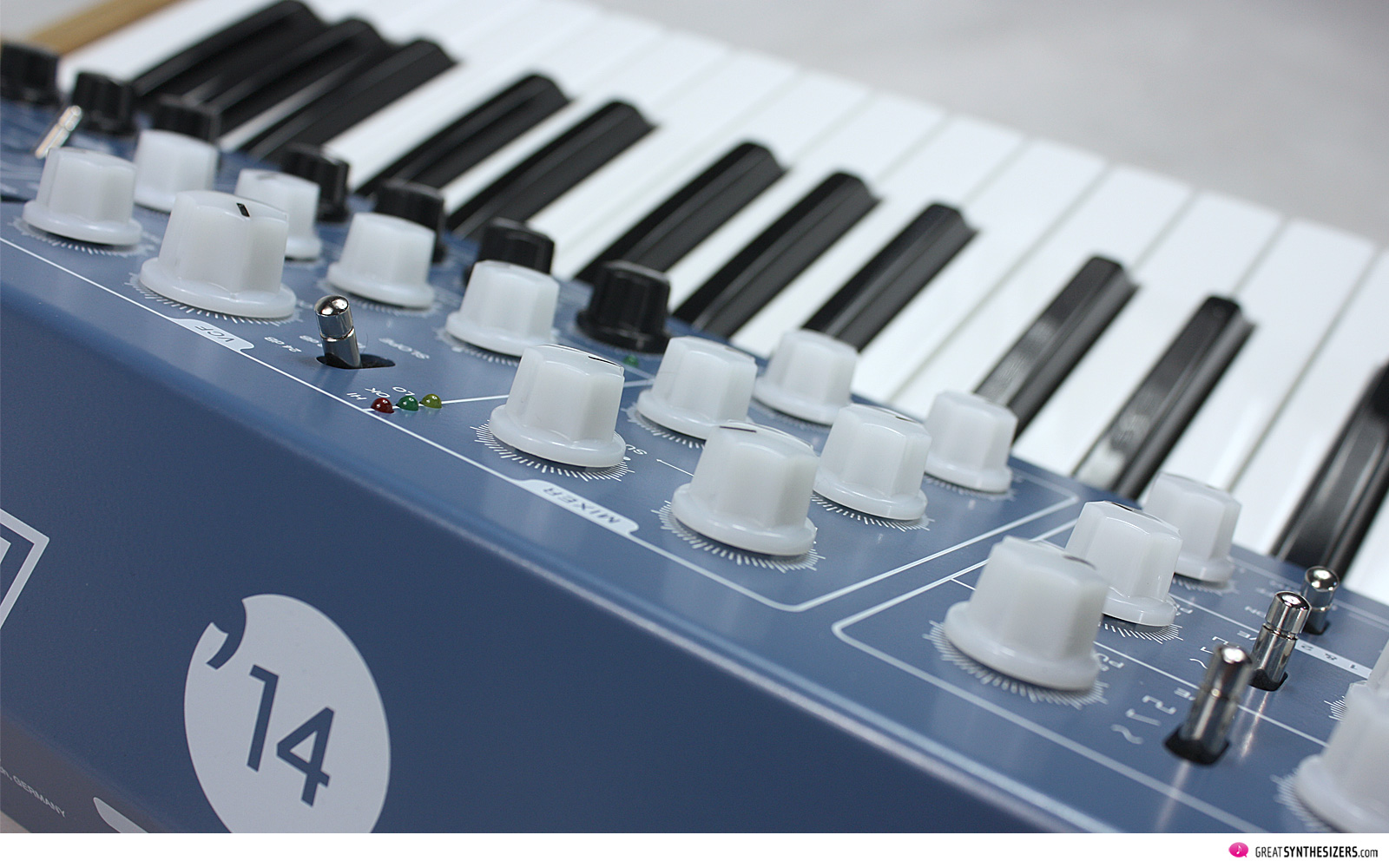
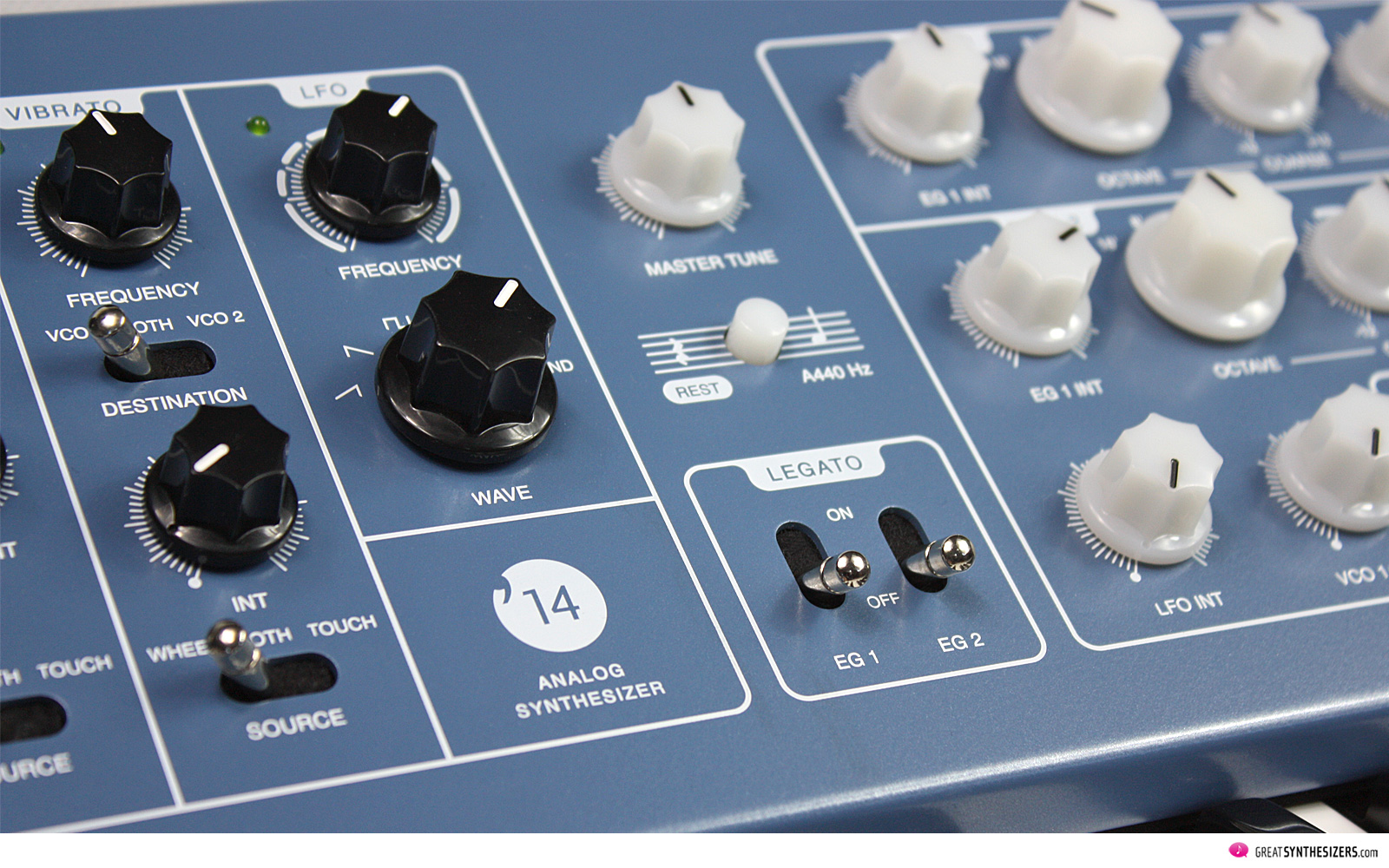
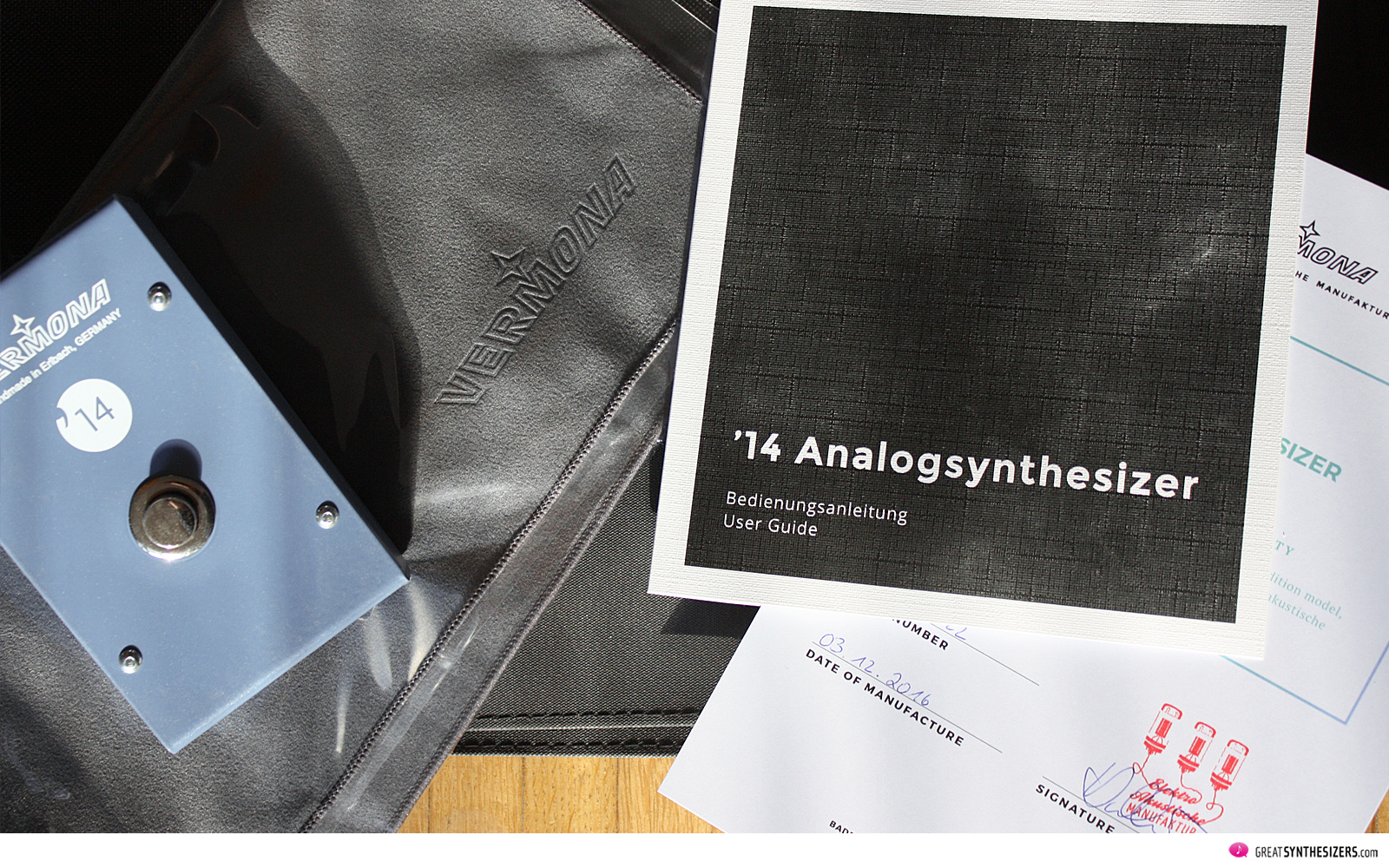
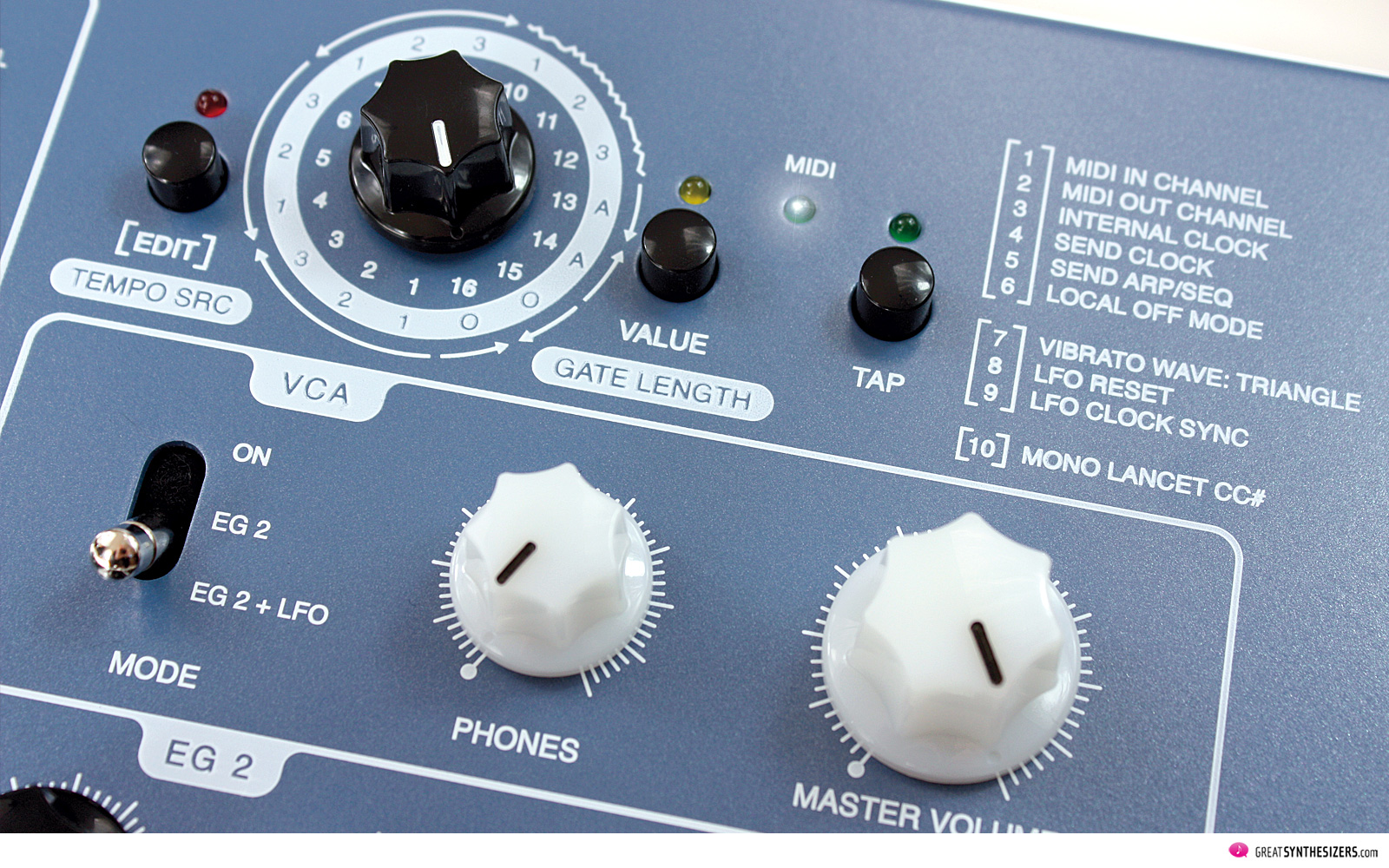
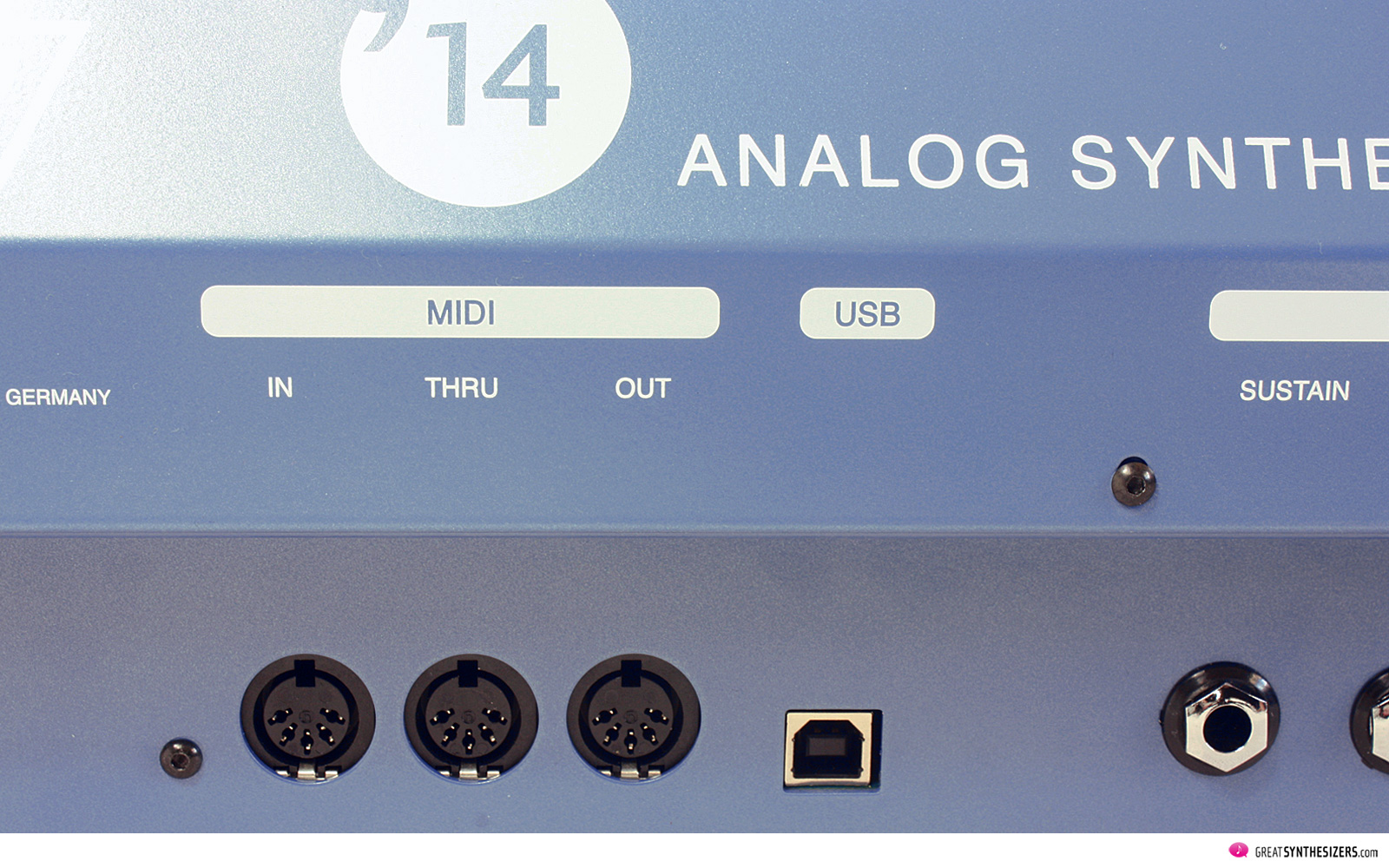



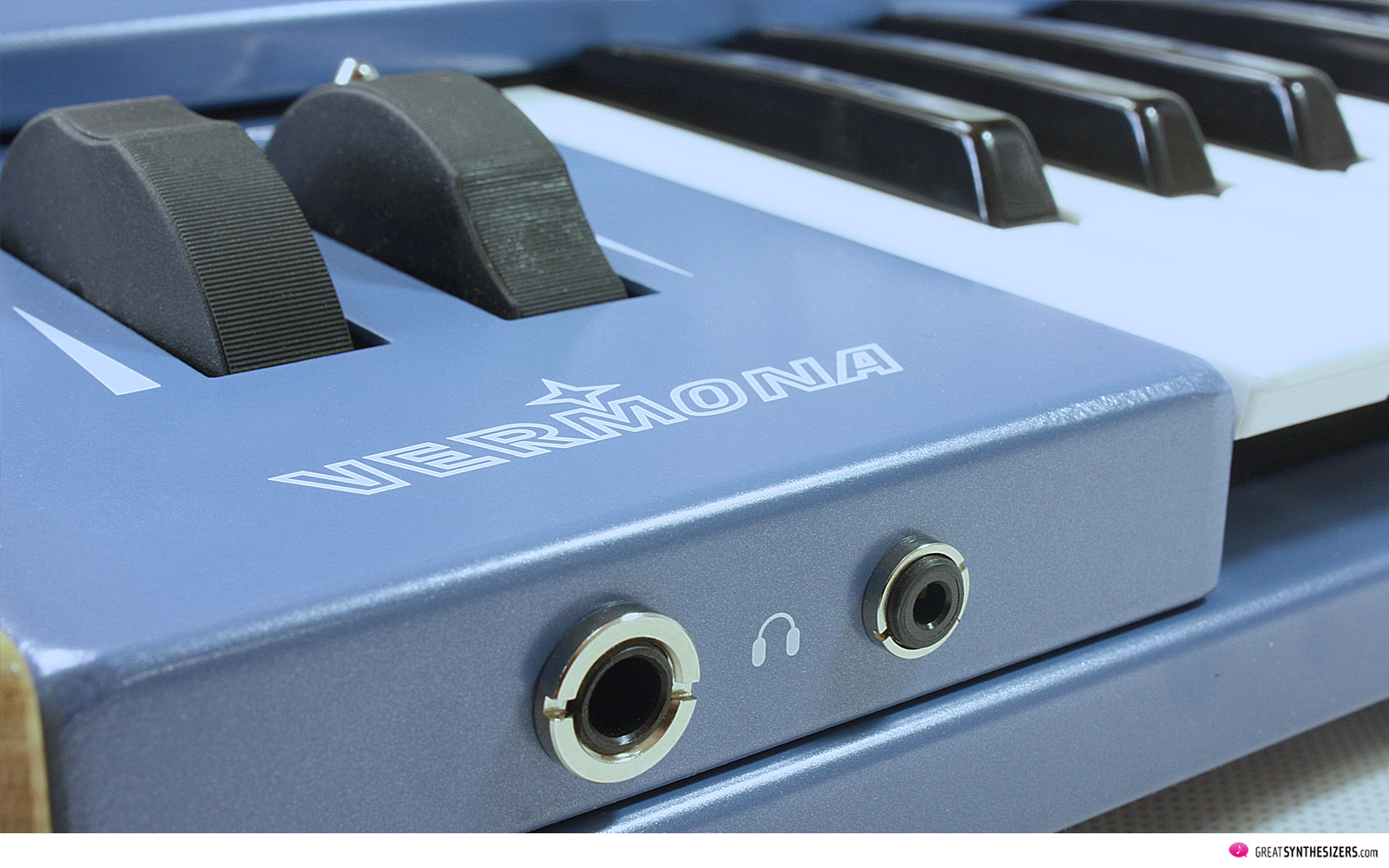
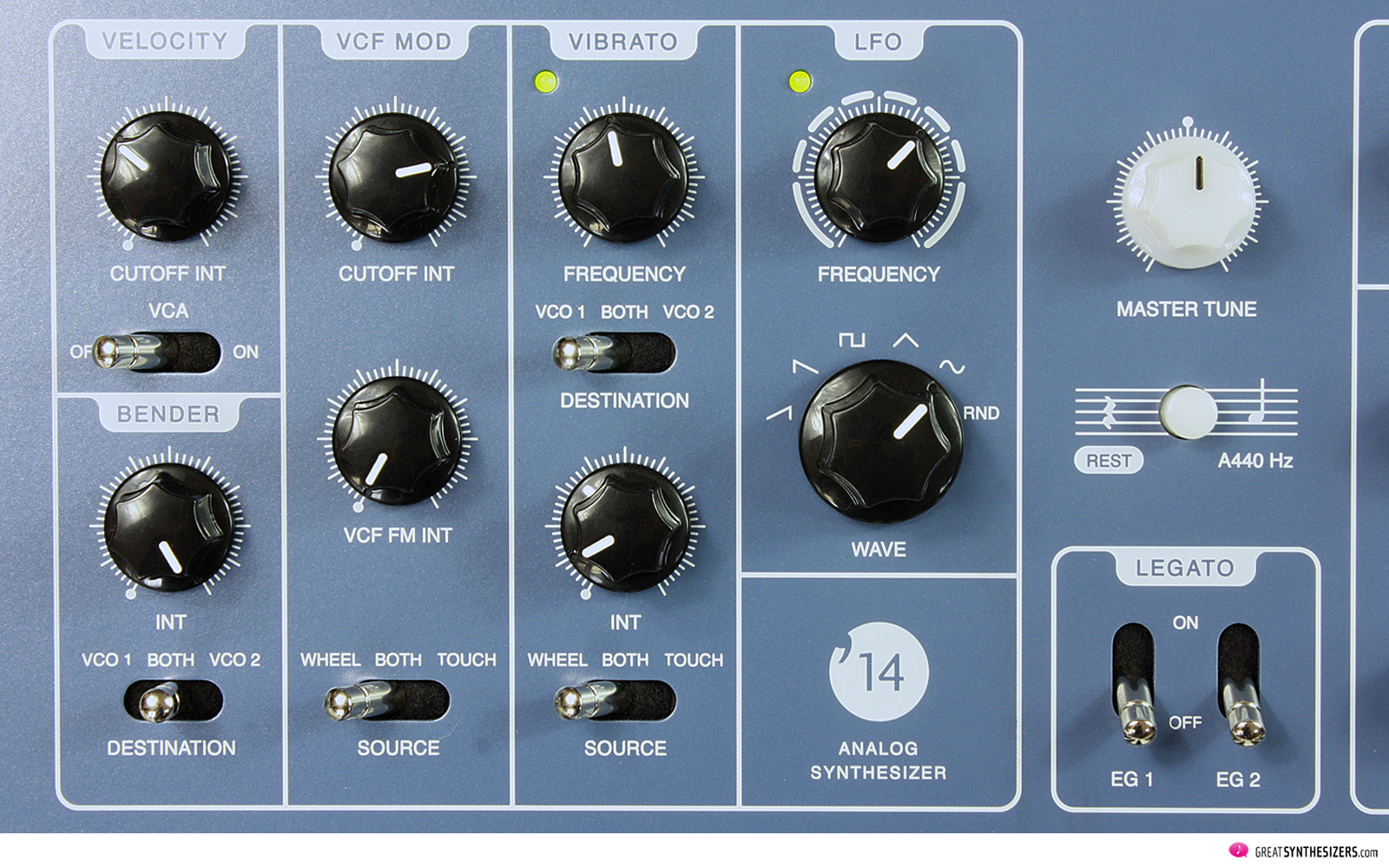
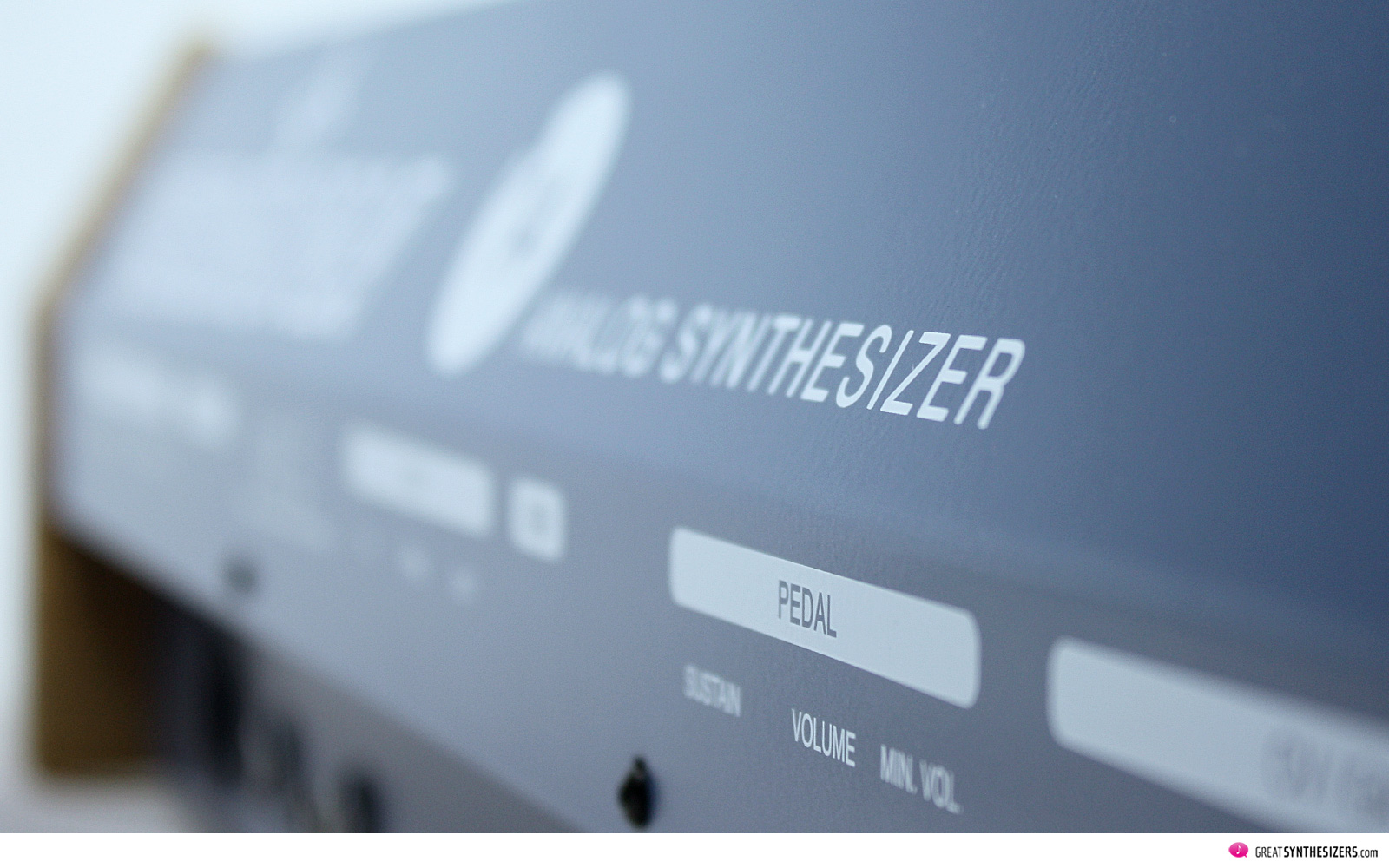
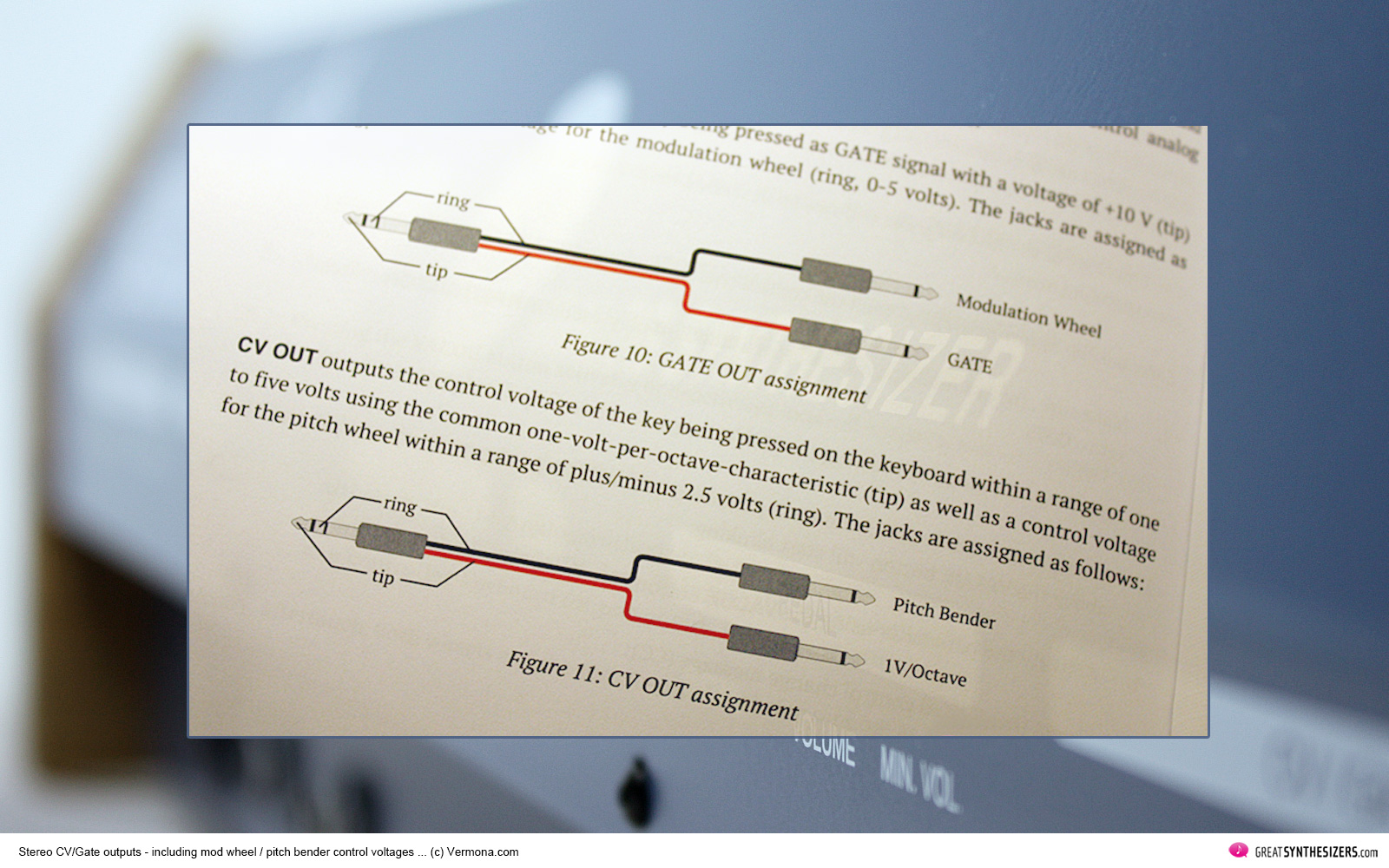
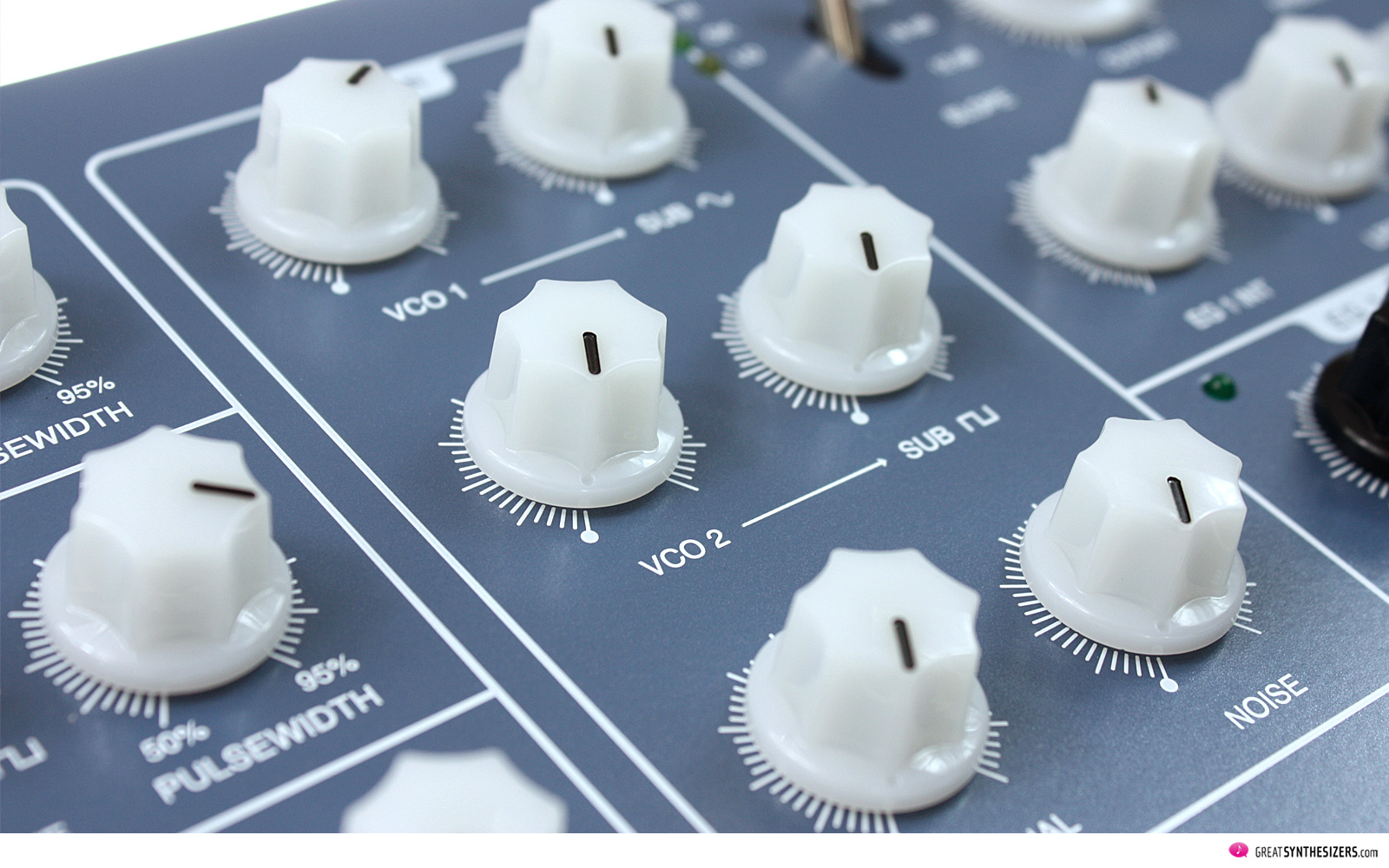
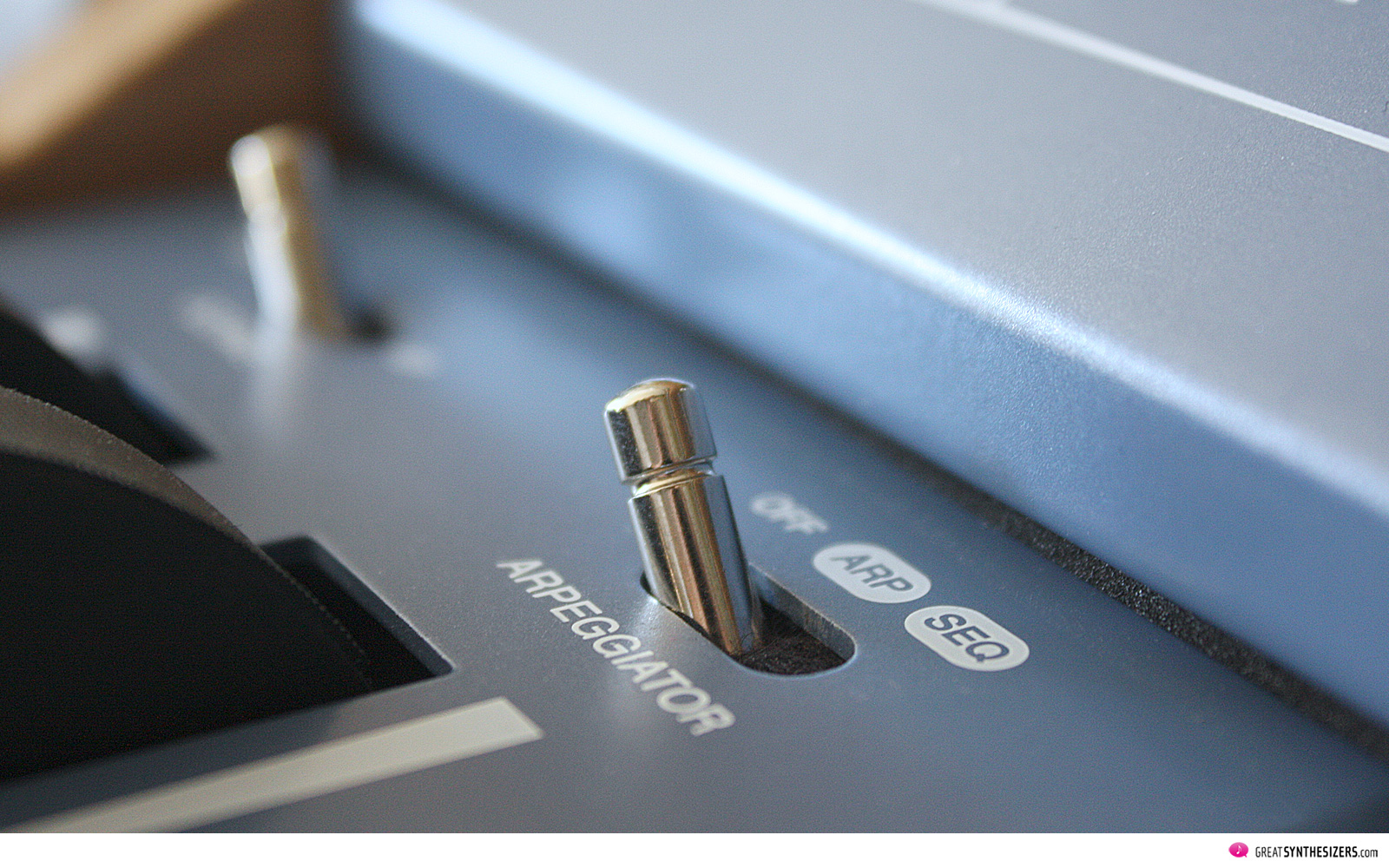
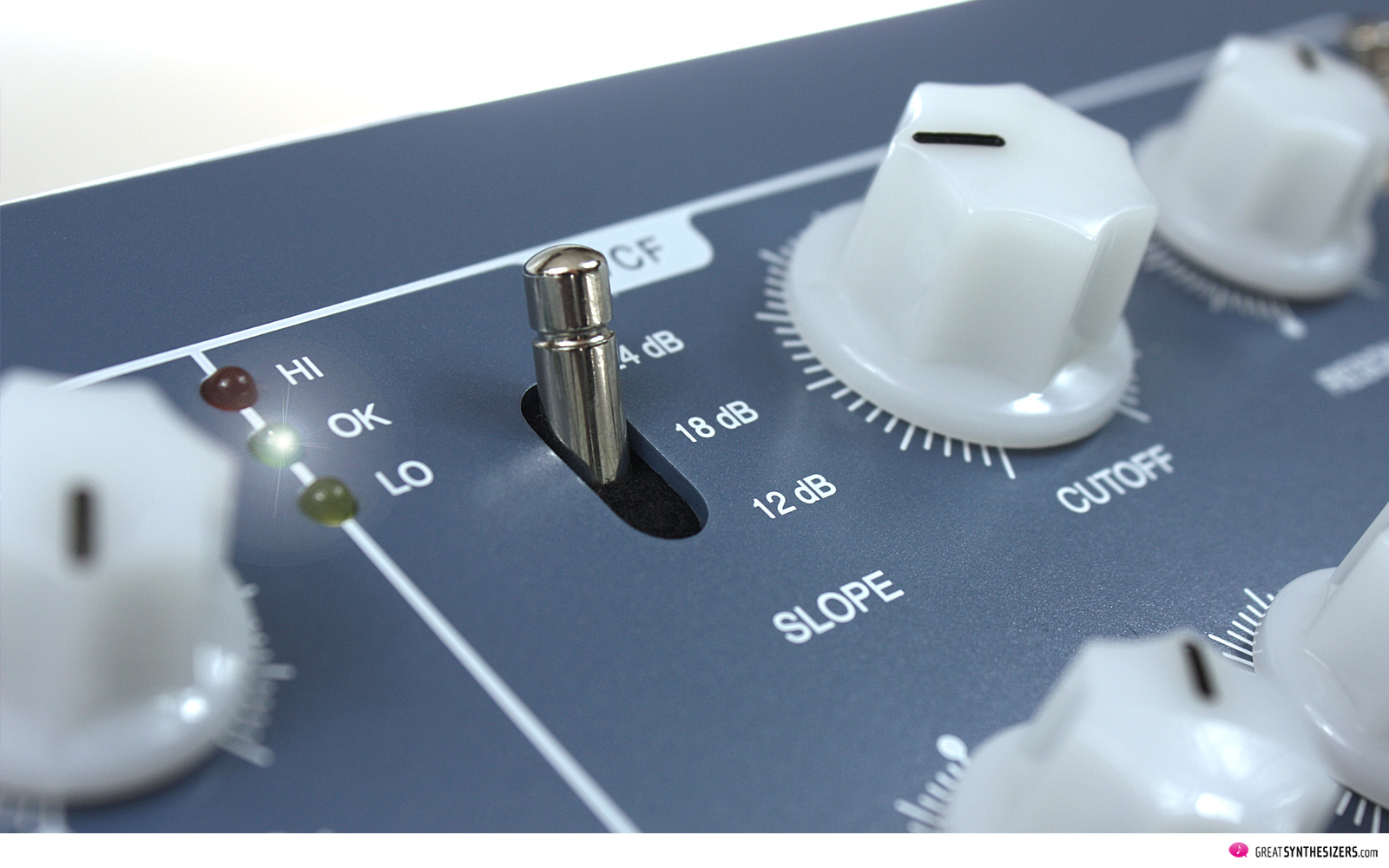
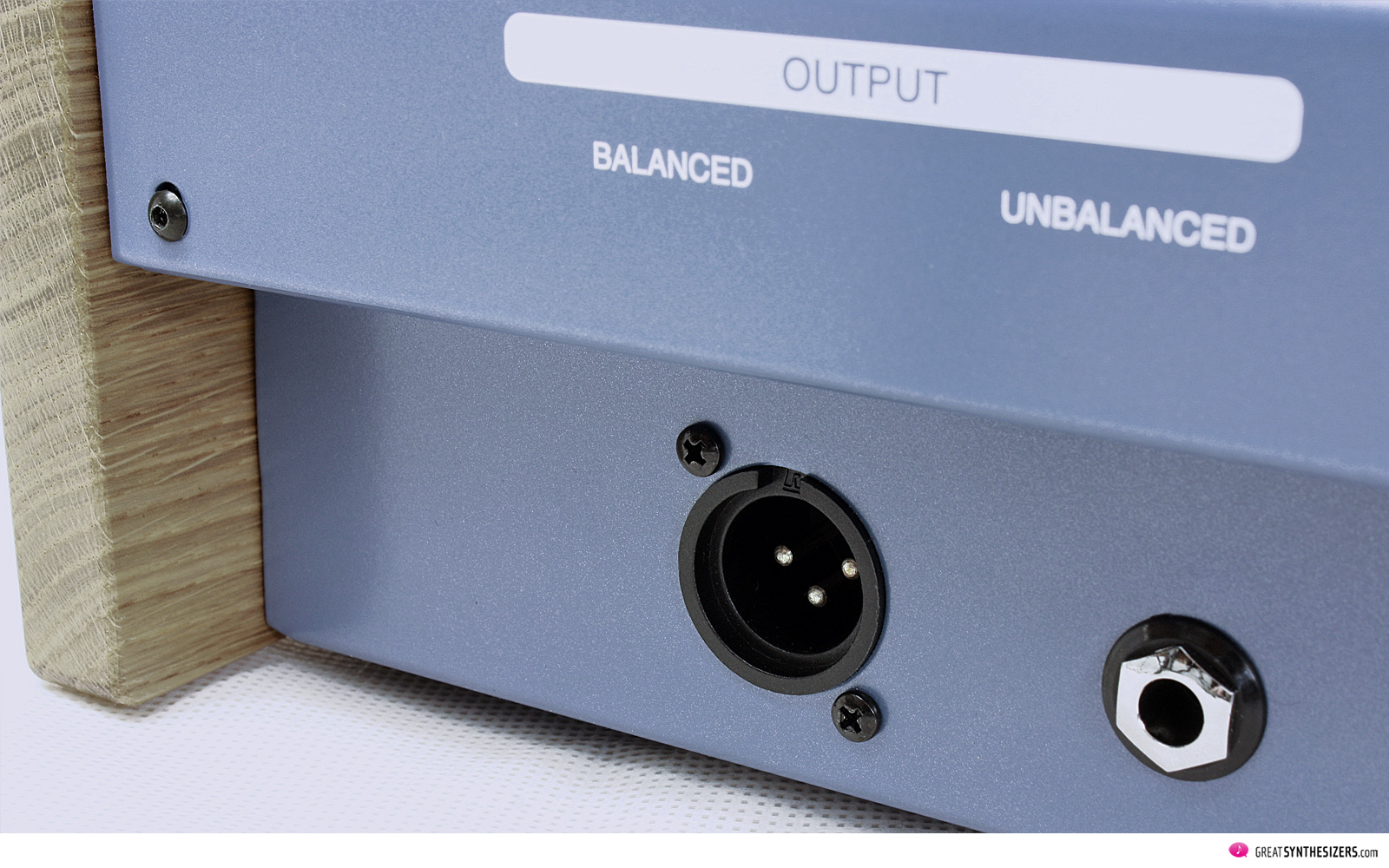
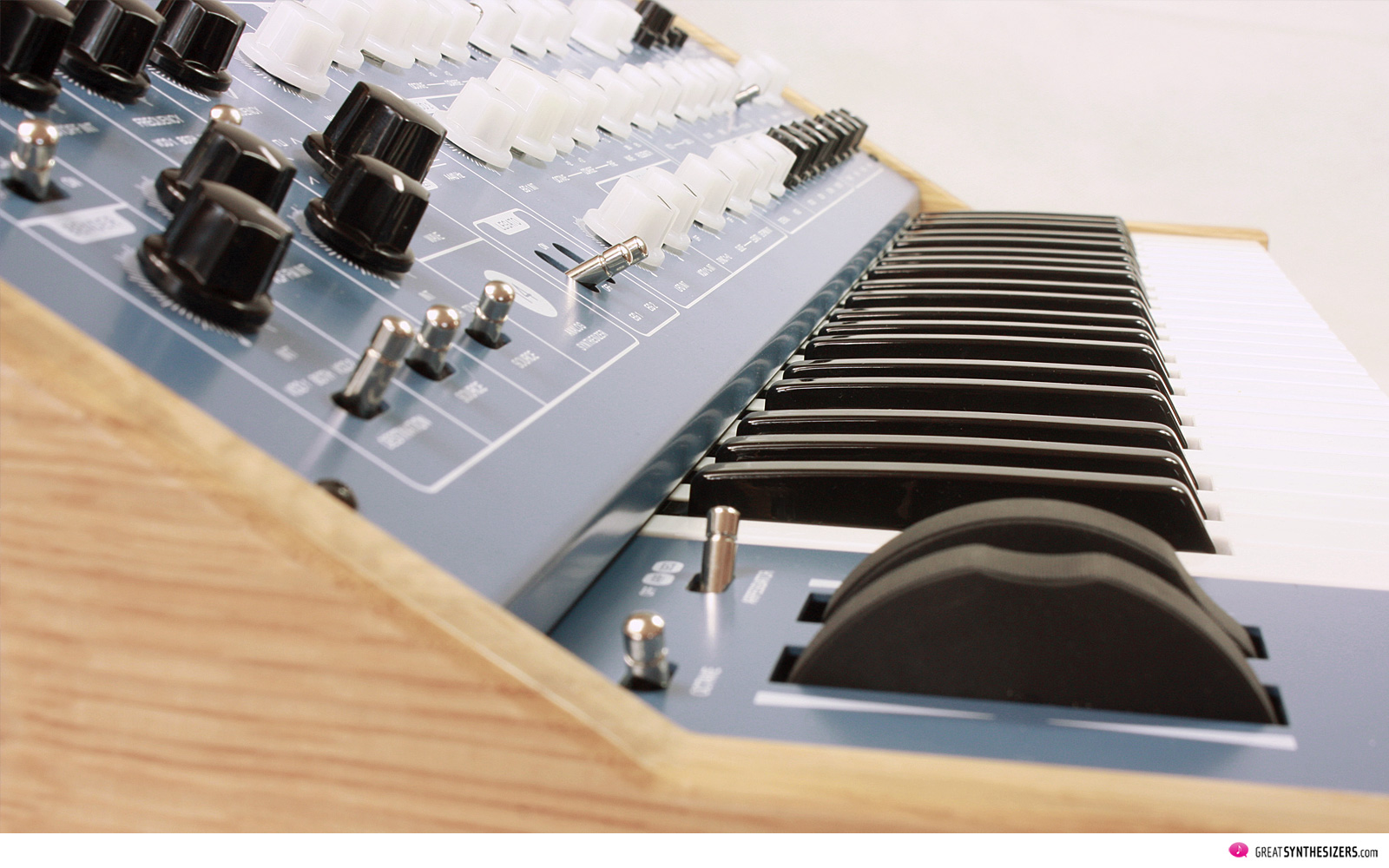
that price :o
Regarding the extreme filter resonance: does it behave similar to the Mono Lancet and Perfourmer at high resonances? As a Mono Lancet owner, I think I may fall in the category of those who are fond of Vermona’s dirty high resonance “non-harmonics”.
… even a little dirtier (non-harmonic), in my opinion. Anyway, I’ll ask Vermona to get some reliable information (whether the filter circuit is different or not).
Hi Theo, I really like the Vermona sound – I got the Perfourmer around Christmas time and was playing with it for hours. Wonderful concept, wonderful tone – I was really blown away. Plus it looks gorgeous. Same for this synth – thing of beauty and sounds killer. BUT – the price. Given that I was able to pick up the Perfourmer for 1000eur incl CV/Gate – this one at 2400 almost makes no sense. I understand why Moog is selling the Mini at 3.9K – its the going rate for vintage Minis and this way Moog pockets any price upside right away. I can understand Vermona wants to do the same, but the 14 is no Mini – although I admit it sounds wonderful and unique. Whats your take on this?
Hello Kamil
1000 Euros for a PERfourMER MKII with CV/gate is a bargain – congratulation! From a musician’s point of view, you probably own the best Vermona available – 4 parallel synths in one box means pure creativity! It can’t be compared with the ’14, though, since the “bard” has a keyboard and other hardware extras – it’s simply a more elaborate construction.
Sure, the ’14 is no Mini, you’re right. (I’m glad it’s not – the Moog sound is gorgeous, but there are enough of those Minimoog instruments – originals and clones – out there.) However, the “bard’s” price is a third less than Moog’s 3.9K … considering this is a handcrafted instrument (like the Mini), 2.4K is definitely “ok”, if not to say a fair price. I guess we have to concede that hand-crafted instruments are not cheap … these synths have their own character, and their value.
You probably don’t “have” to own a Vermona ’14. It’s a collector’s instrument … an instrument for those who don’t already own the state-of-the-art PERfourMER (which is on first place, no doubt), an instrument for those who fall in love with the vintage blue color, an instrument for those who wanna have the Vermona sound “with” its own keyboard attached.
I have to admit that the ’14 is a real pleasure for keyboardists :o)
Very well put, Theo – good point. As I know myself, I will end up buying the ´14 as well – the looks are gorgeous and the sound is killer. Really, in my view today there is GRP, Macbeth, Dreadbox – and Vermona. Vermona is up there with the best. To my ears, the Moog sound is like Ferrero Rocher – sophisticated and crunchy. The Vermona sound is like Nutella pure – creamy and delicious. :-)
Great review by the way – keep them coming!
Hi,
are the “solo” pieces done in one take with the Vermona 14? If so how?
Thanks!
Solo 1 and 3 are 2-track performances each. (Solo 1: solo line + simple bass note; Solo 3: solo line + internal pattern/sequencer). Solo 2 is a single leadline, live of course, with AT (LFO amount). External effect: Lexicon MPX100.
Damn, really lovely sounds in that demo, reminiscent of Rick Wright’s leads on “Wish You Were Here.” Does the Perfourmer sound like this? I played with a Mk1 many years ago and found it rather shrill…
Theo, That ’14 Vermona sounds amazingly wonderful and exactly as you describe it. It SINGS. However, to point out something that may or may not be so obvious, to surf the web looking for other demos (and finding them) shows that the ’14 sings “not so much.”
Well, it’s not that it sings “not so much” but rather that you’re an incredibly talented musician who knows how to bring the best from the synthesisers you write about and demonstrate. As someone who’s primarily a pianist, it’s not all that different in the realm of pianos. One needs a fantastic piano AND a fabulous pianist to really get the instrument to sing.
I point this out because the ’14, as you play it is an absolutely remarkable beast. It seems to breath like an acoustic instrument. But, I think a lot of that so-called breath comes from your fabulous skill with the instrument.
It’s an interesting point: Who does the singing? The musician or the instrument? I’d say the answer is the instrument sings to the extent that the performer does. But with something like the ’14 a performer who can really sing, so to speak, is going to get something extraordinary from the instrument. But, with less developed skill on the part of the performer less will come out. To the point that some of the demos I’ve heard on Youtube are far less spectaular than what you’ve posted here.
Please note, this is NOT a criticism of the instrument. Again, it’s what the play brings to it. I suspect it’s not what you’re interested in but I personally would love to see you review, play, and demo the Dave Smith Instruments Pro 2. My opinion is you’d make it sing and we’ have another Bard in the house! But that’s my opinion. In any case, your writing and demos are fabulous!
Hi Mark
Thanks for the feedback! The point you’re talking about is very interesting, something which particularly concerns me since many years. Not only considering synthesizer demos, but electronic music in general.
I enjoyed a classical music education (music theory plus piano & drums), which might be an advantage. Not certain, however, if studying music is really necessary (you have to deal with a lot of topics you’re “not” interested in), but playing a REAL instrument is one major key to understanding electronic instruments. The physical demands are very similar, no matter whether you play a piano or a synthesizer. I believe most (electronic) musicians are willed to bring the best out of their keyboard / synthesizer / modular system; but some of them thus lack a certain fundamental knowledge (and feeling) of HOW you play an instrument. And all those electronic features can not make up for that basic lack in practical music theory / practical music performance. So, learning piano for (at least) a few years would probably be beneficial to any electronic musician.
You’re right – the DSI Pro-2 is a glorious instrument … maybe there’ll be a review some day, I hope so :o)
All the best – Theo
Hi Theo,
Thanks for the response. I’m not certain either if a classical ed is necessary (or even piano lessons). I’m a strong believer in “if you (pre)hear it you can play it.”
Hope you can do a DS review. I’ve sensed that it’s not to your preference (maybe I’ve sensed incorrectly!) but either way would love to hear your thoughts.
What really captures me with your demos are the way you’re able to slowly release keys and take advantage of pressure. It sounds just like a vocalist (to me!). Too many synth manufacturers don’t emphasise that aspect of their instruments? …. In any event, that’s my interest in hearing you do a DS review. …. I just got one and find it to be amazing in it’s responsiveness. If the ’14 had CV outputs as does the DS I probably would have gone that way!
Please keep on demoing and writing!!
… hi Marc. You’re probably right. A classical ed is not necessary for doing electronics (open approach being one of its big advantages, actually!). “If you (pre)hear it you can play it” sounds great. Playing skills (keyboard techniques) and some knowledge of melody & harmony is – on the other side – something you definitely have to practise. Something a software sequencer can’t make up for.
As to the DSI Pro-2 … I might be a little reserved, since the original Sequential Pro-One is my (absolute!) favourite analog mono-synthesizer. And it’s for sure that the one synth has nothing to do with the other (which is probably a good thing). High expectations is always a bit of a problem when testing a new instrument. But I’m impressed by the huge enthusiasm among all DSI Pro-2 owners that I know. Seems to be an exceptional analog synth!
More reviews will follow :o)
It was this article that helped me along to becoming #62 of #222.
Great information of this synth.
And after playing for only one night, I have to agree about how
special a sonirity is has!
… thumbs up !
A really cool feature is that the ’14 transmits all the “melody” via CV and gate when in ARP/SEQ mode.
Hook up to a modular or Monotribe and let ‘er rip!
Great Synthesizers said….
“VCO scaling is limited to a modest 3 steps (16, 8, 4 foot). We agree that the instrument’s tonal range is huge, but still: 4 directly accessible octave settings are generally considered to be standard.”
But the coarse tuning on the 16′, brings it down to ’32 and by the same merit it brings a ‘4 up to 2’.
So I can mix a 32′ saw with a 2′ Pulsewave without having to play with the OCTAVE UP (which I leave in High mode, as the ’14 has plenty of bass).
… hi Mark!
That’s correct – the tonal range is huge! Anyway, it would have been wonderful to see the Vermona ’14 come with at least one or two extra octave settings. Like 32-16-8-4-2. All directly at your disposal, not via the (additional) “Coarse” knob, which is a little awkward. That was my only (slight) criticism.
However, the Vermona ’14 is an amazing synthesizer …
Hi Theo,
I know that’s totally comparing apples and oranges in a way but..you’re one of the only person to have experience with both the Vermona ’14 and the GRP A2 (and bigger brothers).
So not really factoring in the price/format difference (for the sake of the comparison, let’s imagine I would be pairing the GRP A2 with a very nice midi/cv masterkeyboard), how would you compare both synths ?
I’m a keyboardist/player/composer in a band setting, and looking to pair a nice inspiring mono lead/bass synth with my beloved and trusty Prophet 6…and it’s a real hard quest !
(I tried the dominion 1 – an obvious contender here – but for some reasons (format, etc.), I couldn’t really “fall in love” with it, despite recognizing that it sounds wonderful too – in fact I love hearing someone playing it !)
Hello Stephane
… not easy to give a suggestion. I love GRP synthesizers, they are great musical instruments, highly desirable. However, if the synth should primarily fullfil the lead-/bass-sound theme, I’d recommend the Vermona ’14. It’s less tricky than the GRP A2, but it’s a true player’s instrument and it blows you away with its sheer oscillator power.
The Vermona VCF (well, the filter resonance) is quite different from everything else out there. While the GRP VCF “could” be considered similar to the Prophet 6 filter – a good, powerful, yet “modern” analog filter sound – the Vermona can sound unlike anything you’ve ever heard (depending on your settings, of course). In this respect, the ’14 Analogsynthesizer might be the better complement to your setup …
Regards, Theo
PS: If there’s a choice, I’d always go for a synthesizer “with” integrated keyboard. The ’14’s “singing” quality comes (among other aspects) primarily from its sensitive keyboard and its lovely controllers. Another aspect “pro” the Vermona – although it’s a very personal one from a synth player’s point of view …
Many thanks !
That helps a lot. Especially about the “singing” quality and overall “instrument as a whole” feeling since that’s something definitely important for me to get this inspiring feeling from synths the same way I have from acoustic instruments (where everything, look, feel, craftmanship, ease to play, response, etc. matters).
And…that’s not something easy to get feedback about, since being a synth user doesn’t mean you’re a keyboardist too (or that the feel/keyboard matters to you in any way), so a lot of reviews never really cover these aspects, double kudos to you for this !
You helped me comforting my first opinion, and I’m probably going to give the Vermona ’14 a try here, while I still can !
Theo, so I remain entranced by the ‘14 …. the sound of the beast as you’ve so elegantly said is magnificent. But a new creature crawls from the swamp. The new version of the Sub 37 seems to have so, like the Matrixbrute. so many modulation options.
A conundrum, as always is there are your great demos of the ‘14 and maybe few other good ones on the web (but engineers don’t know how to talk to musicians about their products! Vermona especially, judging from Youtube clips.
But I haven’t seen that many (2 maybe) Sub 37 videos that show what it can do and if it’s living, sound- and song-wise in the ‘14 stratosphere. What’s your take on this? I know it’s opinion and in the end we choose as we do … But your thoughts and ways of discussing instruments are always interesting. So, anything you might say about a comparison between the two?
I have to object to the sentiment I’m gathering on here that the Vermona 14 is simply part of the PERfourMER MKII circuitry in a nice blue package with some omissions and additions, and that perhaps there’s no need to own both since, hey, it’s essentially all just the same circuitry, right? Wrong.
First of all, they Vermona states on their website:
“However, we did not just carry over these circuits but have adapted and refined these specifically for the ’14 Analogsynthesizer. Besides stability and musicality, we paid great attention to an intuitive and practical scaling of each and every sound parameter.”
I own the 14 and have extensively played the PERfourMER, and the result, in my experience, is definitely something altogether different. Both are magical. But the 14 has PWM to die for. There is a certain extra sweet spot that produces the most growling earthquake-inducing PWM bass I have ever heard or played. The tone, to me, is different than the PERfourMER in certain respects. I love both instruments and hope to get the PERfourMER soon, but let’s start making a more accurate distinction between the two instruments. The 14 is incredibly underrated because of this misconception, I think.
I own both the 14 and the Subsequent 37, so I’ll chime in.
The 14 has a better tone. Period. This is most apparent when the filter cutoff is wide open for both. The S37’s PWM is what I can only describe as “washy”. The 14’s PWM is what I would call warm, organic, round, tight and together. It’s the best PWM I’ve ever heard or played. Theo may disagree, as he’s played a lot more synths than I have, but I’ve played my fair share.
Where the S37 comes to life is arpeggiations and sequences. It has great, short, punchy envelopes. I love it for that. The PWM then sounds great; it’s only when the bass notes are allowed to ring out that I don’t care much for it.
The 14 has good envelopes too, but I think the S37’s are better. It sounds great when sequenced or arpeggiated, but I don’t like the onboard sequencer or arpeggiator at all. There is no hold function for the arpeggiator. The sequencer can’t be transposed by pressing another key, or if it can, I haven’t figured it out yet. Which brings me to my next point: the seq and arp are unintuitive, and therefore I never use them.
In short:
Subsequent 37: I love the sequencer and arpeggiator, but I don’t like to actually play it freestyle that much. I nonetheless have more fun with it than any other instrument and play with it the most.
Vermona 14: I love playing it, but I don’t like the sequencer and arpeggiator. Exact opposite from the Subsequent 37. Tone to die for. S37 can’t hold a candle to its PWM or any open-ended sound that doesn’t have quick snappy envelopes.
… thanks for this informative comparison …
The Vermona 14 is, for me, the closest thing to a perfect analog monophonic. It is visually stunning….the light metallic blue is soothing to behold. The keyboard action is just perfect for me. The front panel layout is vey intuitive. The VCO’s are rich and very stable. The VCF is wonderful, not quite Moog-sounding, but then again, everyone and their uncle want to ride the me-too Moog sound bus, and at this point it’s become quite trite, IMO. This one sounds aggressive and rich in its own unique way. Perfect for aggressive leads. Feed it a hard-synched VCO and it will slice through a mix. Beautiful instrument…..one with which I’m planning to be buried after my death.
One more thing that needs to be emphasized about the 14, which I think Theo is the only person in existence who has touched upon this…the natural overdrive/clipping that can be obtained by turning up the mixer section is out of this world. I have never heard anything like it; it’s so warm and rich. It puts the CP3 mixer in the Moog Grandmother, which everybody raves about, to shame. So many videos of the 14 seem to be one dimensional barely detuned sounds meant to sound like some woodwind instrument. Why?? This thing can sound so different and 3 dimensional. Time to learn how to make vids for YT….
“The only difference to a “real” step-sequencer is the fact that you’re always stuck to one of these arpeggio modes: up, down, alternating, random, whatever … as the basis of your “sequence”.”
You also have the option to set the switch to “O” button 15 or 16, which allows you to enter either a straight order or reverse sequence.